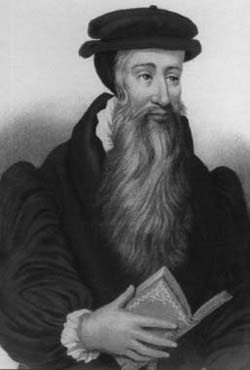|
 Returning from exile in Geneva, Knox joined the Scot's cause against Catholicism, and against the French headed by Mary, Queen of Scots. The Scottish Parliament established Protestantism in 1560, and a Confession of Faith and Book of Discipline followed, based on uncompromising Calvinism. Returning from exile in Geneva, Knox joined the Scot's cause against Catholicism, and against the French headed by Mary, Queen of Scots. The Scottish Parliament established Protestantism in 1560, and a Confession of Faith and Book of Discipline followed, based on uncompromising Calvinism.
Scandinavia
Following the death of Martin Luther in 1546, Calvinism spread rapidly into Scandinavia. With the support and encouragement of King Christian II, and the efforts of Paul Eliae, a Lutheran humanist in Copenhagen, Denmark was prepared to accept the Lutheran doctrine. King Frederick I finished the task by creating an official Lutheran reformation in Denmark.
In Sweden, Gustavus Vasa led the way, assisted by theologians Lars and Olavus Petri from Wittenberg. A Swedish New Testament was published, and Iceland and Norway soon followed. King Michael Agricola adopted Lutheranism, and brought the Lutheran doctrine to Finland.
The Rest of Europe
The Lutheran doctrine also moved east. Poland was divided, as the Unitarian ideas of Sozzina were also very popular. With its Germanic influence, Hungary favored Lutheranism. Czechoslovakia had its own Hussite reform movement, with some influence from Lutheran ideas.
Calvinist or Reformed Protestantism was strong throughout Europe. From Geneva and Strasbourg, it spread throughout Germany and to parts of Poland. Despite heavy persecution, Calvinism moved into France. For some, it was a message of hope and salvation; for others, it was a change in religion used by nationalists seeking to win their independence. John Calvin's model in Geneva was not a helpful one, particularly in countries already embroiled in a dangerous mix of national or religious dissent. In France, the problem was solved only with the ejection of the Protestant Huguenots, a significant portion of the French middle class.
|
